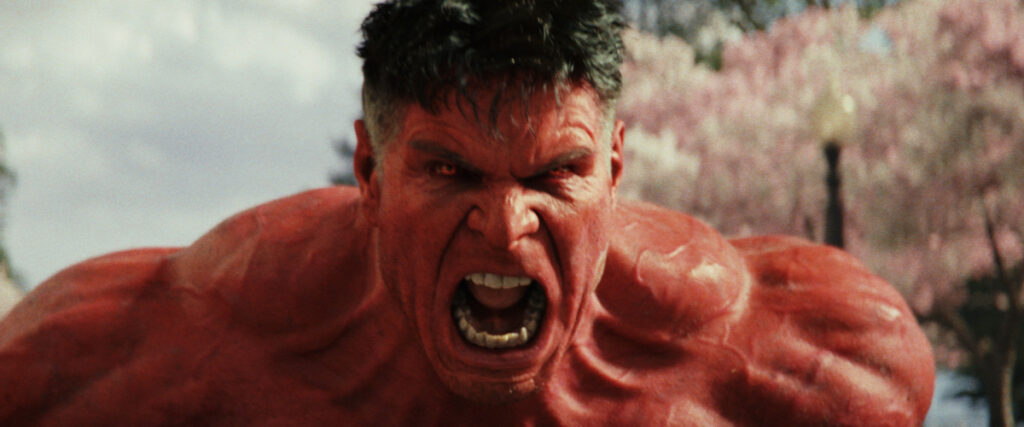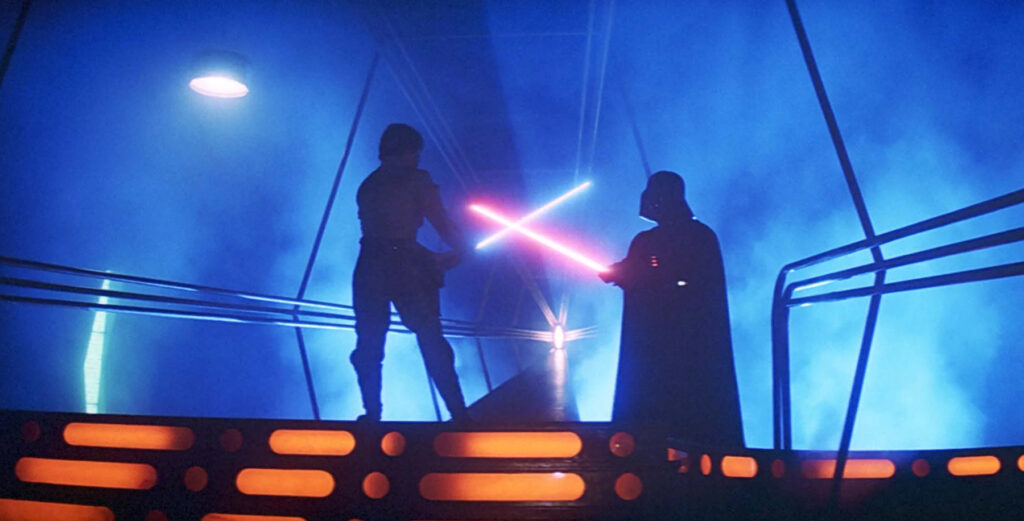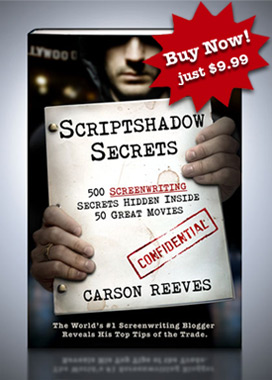
I checked out Captain America Brave New World this weekend, as it finally became available on digital. All in all, I had an okay time with it. As much crap as Marvel movies have received over the last four years, they bring something no there type of movie brings – which is high-budget feel-good entertainment – movie escapism at its best.
I also watched the A24 movie, Opus, about a journalist who visits a former pop star at his retreat only to learn that he’s running a cult, and while I also like that movie, it didn’t give me the feeing that a Marvel move does – that pure energetic infusion that makes you feel like a kid again.
Opus makes you feel confused, a little bit down, sad for the state of humanity. There’s nothing wrong with those movies but if all we had to watch were adult-themed films, we’d want to hang ourselves. Marvel is one of the few outfits that gives you a fun time at the movies.
With that said, Marvel has created a unique a screenwriting-related problem for itself that it doesn’t seem to have a solution for. I’m talking about STAKES. Stakes are the measured importance of what your characters are doing. Things have to matter for audiences to care about what your characters are doing. With Oppenheimer, for example, the fate of the world was at stake with the creation of the bomb.
This problem of stakes actually existed before Marvel popped up. It’s been an issue ever since George Lucas and Steven Spielberg invented the blockbuster back in the late 70s, and then eventually the trilogy. Lucas may have screwed all of Hollywood, in fact, when he came up with the Death Star. How do stakes get any bigger than a planet-destroying base?
Because, if you’re creating a sequel, you are tasked with upping the stakes. Otherwise, why would anybody show up to your film? Nobody’s really been able to figure out a definitive answer to that question.
In a way, the higher the stakes you create, the more you hamper your franchise moving forward. Cause you can’t top stakes that are already sky-high.
Marvel has had to deal with this on a whole other level, though. Because, unlike a trilogy, Marvel has a universe. So it doesn’t just have to figure out how to make the stakes higher in movies 2 and 3. It has to figure out how to up the stakes in movies 14, 15, 16, 17, 18. And what it’s learned is that that’s almost impossible.
I say “almost” because they found a momentary loophole – the gimmick of one-off all-star team-ups. Three Spider-Mans in one film for example. Or Deadpool and Wolverine. As far as consequences are concerned, neither of those films have high stakes. But the juicy team-ups distract us from that.
However, “juicy team-ups” is not part of any known writing formula. So you can squeeze 2-3 movies out of it. But, sooner or later, you have to go back to telling real stories without gimmicks. And that’s when you’re going to need stakes again. But you can’t create stakes if you’ve already given us movies with the highest stakes ever. I mean, the bad guy in the Avengers movies erased half the people in the universe.
Which brings us back to Brave New World. How do you make this movie work? What kind of stakes can you possibly introduce that will feel big enough to make us show up? Sure enough, they couldn’t. At “stake” is a brand new metal, called adamtanium, which is even more powerful than Wakanda’s vibranium. Not exactly snapping half of the universe away.
This is why nobody showed up for this movie. Avengers, Iron Man vs. Captain America, three Spider-Mans, Deadpool and Wolverine. Those movies destroyed any opportunity for Marvel to release a film like Brave New World. You’re asking the audience to show up for Taco Bell after serving them prime rib. Why would you think you could do that? It’s either arrogance or ignorance. I don’t know which. But you’d think there’d be somebody smart enough to know that audiences don’t show up for the understudy.
So, I pose a question to you. If you don’t have these giant stakes, what do you do as a writer? If you – as in you reading this article – were tasked with writing Brave New World, what would you do? Because there is, actually, a solution. And that solution is, you move the stakes over to the characters as opposed to the world.
We actually see a successful example of this in one of the greatest franchises ever, Star Wars. In the second Star Wars movie, The Empire Strikes Back, there isn’t anything close to the magnitude of the Death Star. And yet many people consider Empire Strikes Back to be even better than Star Wars.
What can we learn from this? How did George Lucas pull a “lower stakes” movie off?
Well, he shifted the stakes onto the characters. It went from the importance of taking over the galaxy with this planet-killing base to defeating the character – Darth Vader – whose very existence allowed the Empire to control the galaxy. And, of course, the stakes were higher within Luke himself. He’s learning the Force, which threatens Darth Vader’s ability to rule the galaxy. So it is critical that Darth Vader defeat him.

This is what mid-tier (non team-up) Marvel movies ARE TRYING TO DO. This is what Brave New World is TRYING TO DO. It’s accepting that it’s not Avengers: Infinity War. But it’s trying to create characters that we care about and, therefore, become invested in, in the same way that high stakes make us invested.
The problem with that is, it’s hard to make characters do the heavy lifting in spectacle movies. Cause people come to spectacle movies wanting spectacle. And when you tell them, “We don’t have as much spectacle, but we’re gonna give you some neat characters instead,” it feels like a bait and switch to the average audience member. Cause Marvel has made them used to giant high-stakes spectacles.
And you can see just how hard it is when you consider that, in order for The Empire Strikes Back to pull it off, it needed 2 of the 5 greatest movie characters of all time in Darth Vader and Han Solo. How realistic is it that you’re going to write 2 of the 5 greatest movie characters into your movie?
I would go so far as to say Sam Wilson is, realistically, not even in the top 5000 best characters of all time. If your main character isn’t even in the top 500 best movie characters and you’re building your movie around character…. um, Good luck.
With that said, you still have to try. As a producer, you can’t walk into the Captain America writer’s room and say, “We know Sam Wilson’s Captain America isn’t a great character so we’re not even going to write him an emotionally compelling storyline.” No, you try. Because if you do pull a great character off, it will distract the audience from the fact that you don’t have gigantic stakes in your spectacle movie.
Where I think the Brave New World writers dropped the ball was in Sam Wilson’s internal struggle. What made Chris Evans’ Captain America intriguing was that he believed in doing the right thing no matter what. But sometimes he was presented with situations where doing the right thing no matter what could result in more damage than doing the “wrong” thing. So it was fun to observe that inner battle.
Sam Wilson didn’t have anything like that. Instead, they tried to lean into this idea that he’s taking the place of a beloved hero and trying to live up to that expectation, but that’s less relatable than the universal human struggle to choose good when constantly faced with temptations to do otherwise. In fact, after President Harrison Ford tells Sam Wilson that he’s not Steve Rogers, that was pretty much it when it came to that internal battle. They barely addressed it again. So, it obviously wasn’t enough.
To me, this is yet another reminder that old school screenwriting principles give you the biggest head starts in your script. Two of the big ones are: 1) create likable heroes and 2) give them interesting internal struggles that need to be resolved by the end of the movie. If you do those two things, you’re ahead of 90% of the screenwriters out there. And if you can add giant external stakes on top of that? Then there’s a good chance you’ve got a juggernaut of a script on your hands.

